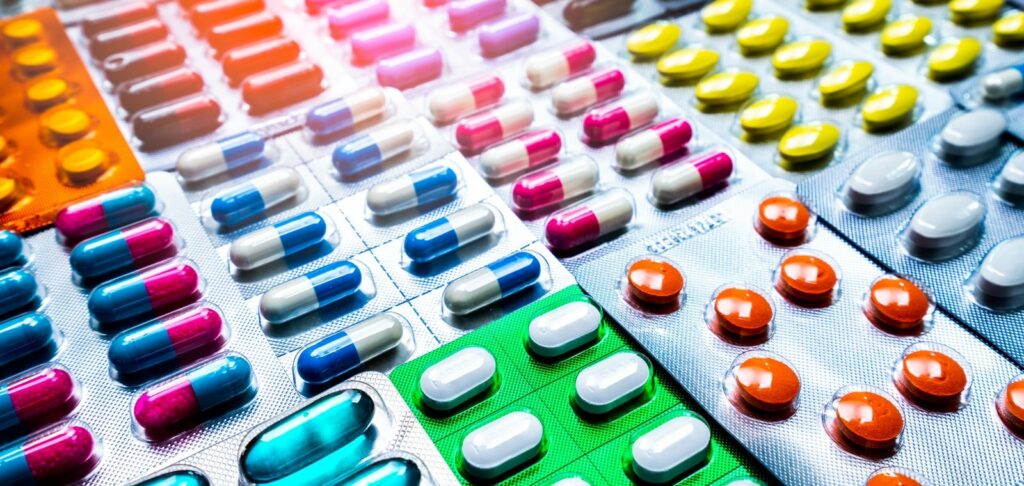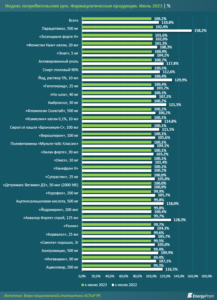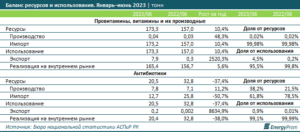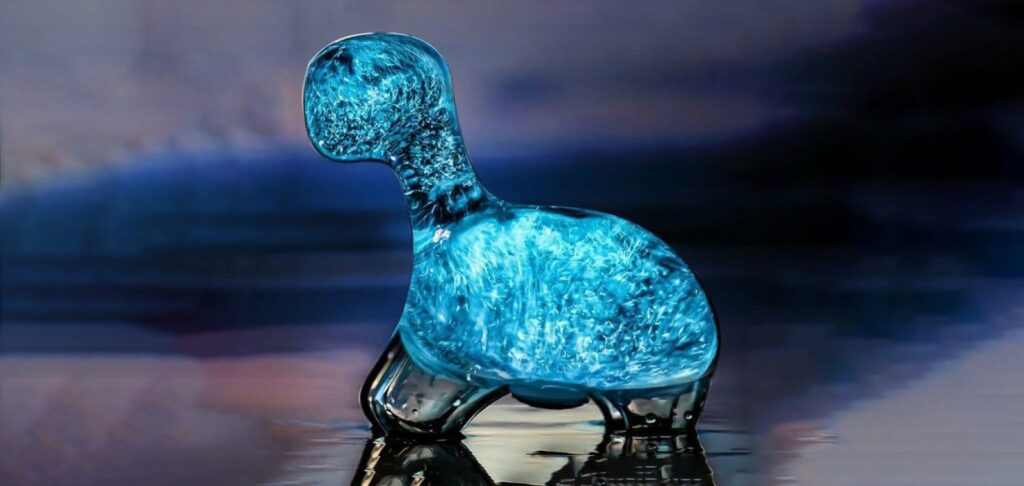
За даними EnergyProm, у липні 2023 року фармацевтична продукція в Казахстані подорожчала на 0,2% за місяць та на 10,8% за рік.
Найбільше подорожчання у місячній динаміці було відзначено у Павлодарській області: на 1,2%. Слідом йдуть Улитауська (плюс 0,7% за місяць), Східно-Казахстанська, Жамбилська, Жетисуська та Костанайська (плюс 0,6% у кожному з регіонів) області. В Атирауській та Акмолінській областях ціни залишилися на колишньому рівні. У Туркестанській, Карагандинській та Алматинській областях ціни, навпаки, трохи знизилися: на 0,4%, 0,3% та 0,1% відповідно.
У річній динаміці найбільше річне зростання цін було зафіксовано в Алмати: відразу плюс 18% за рік. У трійці антилідерів також опинилися Улитауська (плюс 15,4%) та Кизилординська (плюс 14,9%) області. Найменше річне зростання цін було відзначено у Жетисуській області: на 5,9%.

Які препарати подорожчали?
Серед фармацевтичної продукції у місячній динаміці парацетамол подорожчав на 2,4%, Есенціалє форте Н – на 1,6%, краплі Феністіл Нью – на 1,3%, Енап – на 0,9%, активоване вугілля – На 0,7%. Подешевшала така продукція, як ацикловір (на 0,7%), азитроміцин та «Інгавірін» (на 0,6%), «Смекта» (на 0,5%), «Корвалол» (на 0,4%), « Ренні», спрей «Аквалор Форте» (на 0,3%), «Йодомарин» та ацетилсаліцилова кислота (на 0,2%), «Нурофен» (на 0,1%).
У річній динаміці помітно подорожчали парацетамол (відразу на 58,2%), розчин йоду (на 29,9%), спрей “Аквалор Форте” (на 28,3%), амброксол (на 21,5%), ацетилсаліцилова кислота ( на 18%), активоване вугілля (на 17,8%), ацикловір (на 16,5%).
Тим часом в Астані відбулися публічні слухання щодо обговорення проекту націнки єдиного дистриб’ютора як суб’єкта спеціального права на лікарські засоби та медичні вироби в рамках ГОБМП та системи ОСМС, повідомляє inbusiness.kz. “СК-Фармація” хоче збільшити свою націнку на 11,2%. Представники профільних асоціацій кажуть, що не розуміють, через що буде приріст.

Рівень забезпечення фармтоварами – низький
У цілому зараз Казахстан забезпечує себе фармацевтичними товарами на досить низькому рівні.
За підсумками січня — червня поточного року попит (реалізація на внутрішньому ринку плюс мікроскопічний експорт) на провітаміни, вітаміни та їх похідні забезпечено власним виробництвом лише на 0,02%.
У країні за цей період виробили лише 43 кг вітамінів, хоч це і на 48,3% більше, ніж роком раніше. Для порівняння: імпорт становив 173,2 тонни (плюс 10,4% за рік).
Попит на антибіотики забезпечений краще, але все ж таки всього на 38,2%. Виробництво антибіотиків досягло 7,8 тонн — на 11,2% більше, ніж роком раніше. Імпорт при цьому становив 12,7 тонни, мінус 50,7%. Відповідно частка імпорту склала 61,8% від ресурсів. На внутрішньому ринку реалізували 20,4 тонни антибіотиків — на 38% менше, ніж роком раніше (позначився спад пандемії коронавірусу).

Казахстан імпортує ЛЗ
За підсумками першого півріччя поточного року Казахстан імпортував 13,9 тис. тонн медикаментів на суму 694,2 млн. дол. США. У натуральному вираженні зростання становило 11,9%, у грошовому, навпаки, обсяг імпорту зменшився на 3,7%.
Із країн СНД до РК ввезли 4 тис. тонн медикаментів — на 3,8% менше, ніж роком раніше.
Найбільше медикаментів завезли з Росії: 2,9 тис. тонн на 40,9 млн дол. США.
Казахстан також імпортує помітні обсяги медикаментів з Білорусі та України: 609,9 та 413,3 тонни відповідно.
Обсяг імпорту з інших держав, які не входять до складу СНД, становив 9,9 тис. тонн — на 19,9% більше, ніж роком раніше. У трійці провідних країн опинилися Китай (2,2 тис. тонн), Німеччина (1,3 тис. тонн) та Індія (1,2 тис. тонн).



